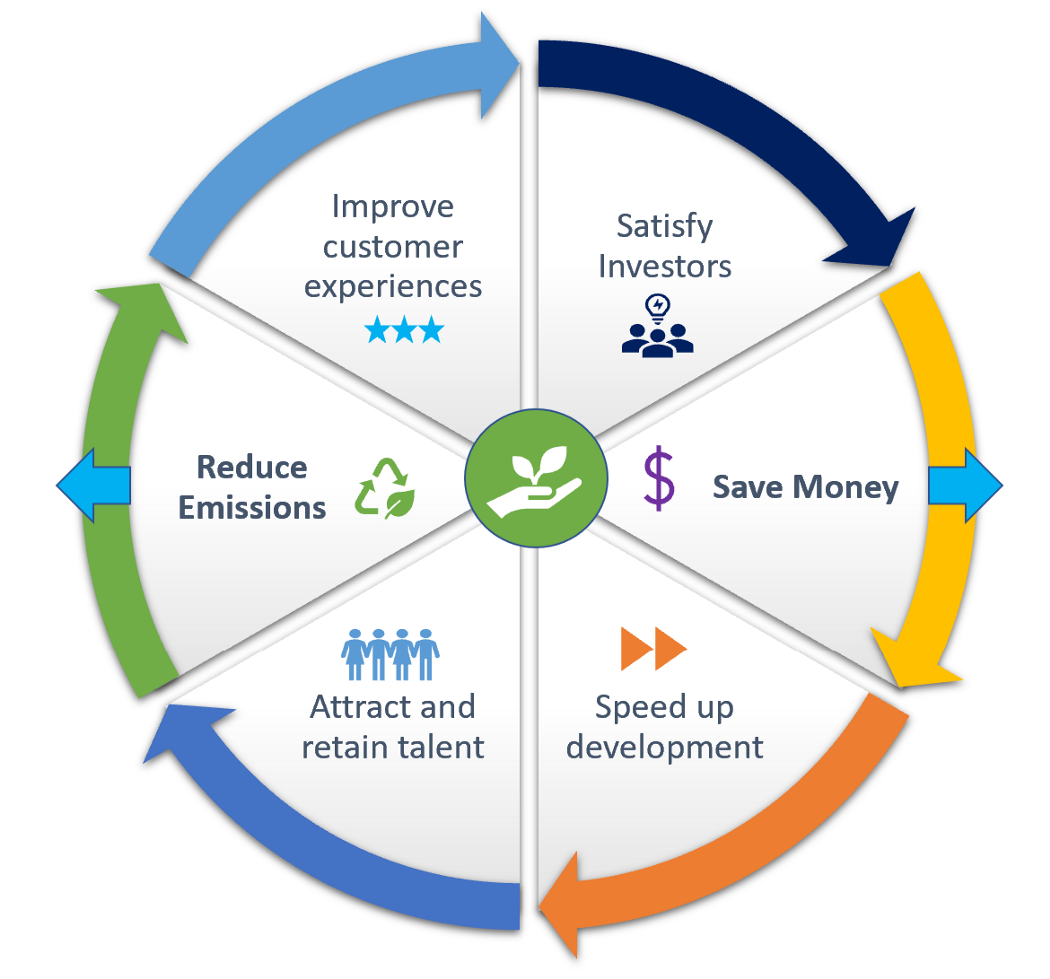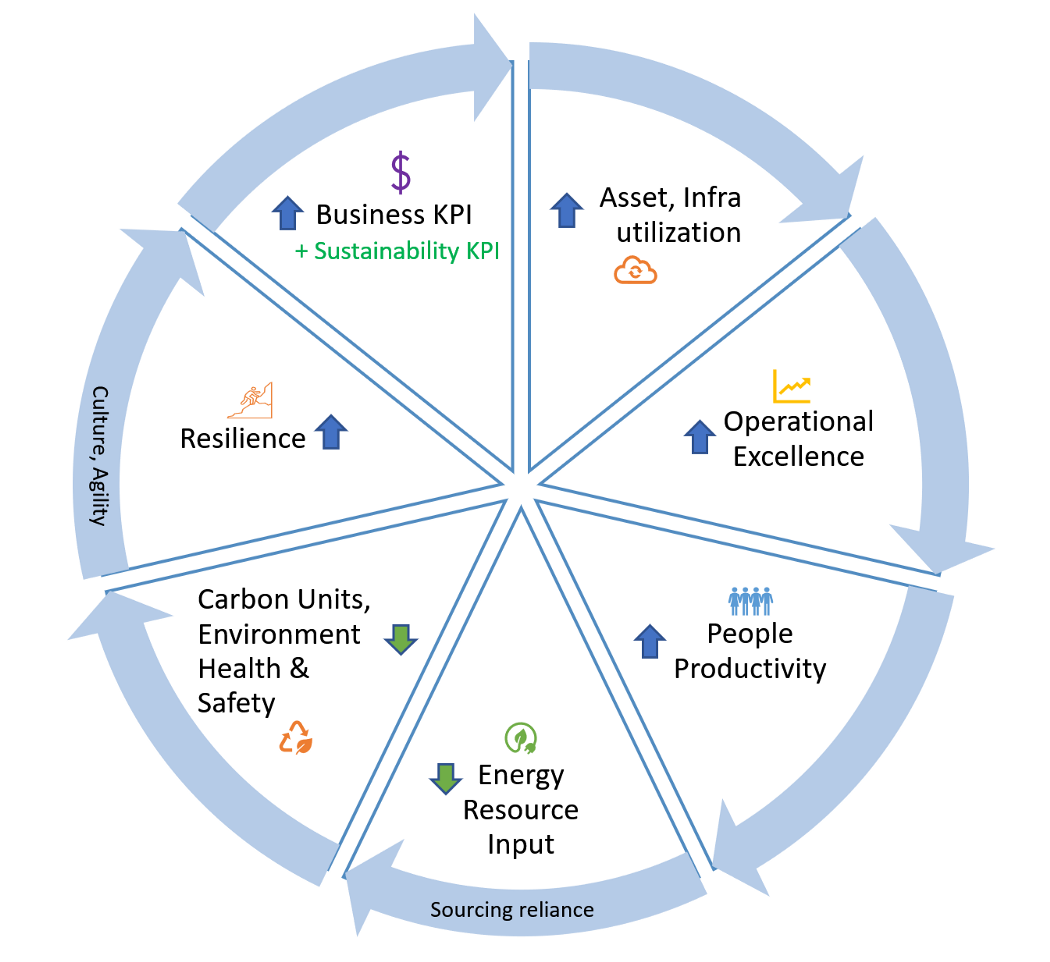Faced with the threat of the global climate crisis, companies are embracing the concept of sustainability. Cloud technology can make a considerable contribution to this process. Why are clouds environmentally friendly? Let's find out.
3 steps toward sustainability
According to the U.S. Department of Energy, on-premises data centers consume 2-3% of total electricity and carbon emissions. Moving to the cloud significantly reduces these staggering energy costs and losses. This is achieved through better server utilization, scalable capacity, and lower hardware requirements compared to on-premises data centers.
The use of cloud technology contributes to sustainability in four major ways:
1. Companies are moving away from physical infrastructure
Microsoft and WSP USA conducted a study revealing that cloud computing is more energy-efficient and emits 98% less carbon than on-premises data centers. The report, published by Accenture strategy, also shows that migrating to the public cloud could reduce carbon emissions by 59 million tons per year, the equivalent of taking 22 million cars off the road. And that's not just numbers, it is reality. Why so?
Electronic Waste. Eventually, the equipment gets obsolete and at the end of its lifecycle, it is sent for disposal, multiplying electronic waste.
Downtime. First, the point is that the physical IT infrastructure is designed for the maximum load that a company may have. In reality, however, most of the time such capacity is unnecessary. The equipment is idle, working half-heartedly, while still requiring constant power, cooling systems, etc.
Dematerialization. Moving to the cloud enables high-carbon-emitting physical machines to be replaced by virtual ones, which reduces a company's carbon footprint. For example, the cloud allows companies to use virtual services instead of powerful hardware, which consumes a lot more energy. Dematerialization reduces both costs and environmental impact.
Green technologies. Cloud providers can deploy green data centers using renewable sources such as wind, solar and hydroelectric power.
2. Fast Innovation Driving Sustainability
Using cloud computing to rapidly innovate can tangibly reduce the negative impact business have on the environment. Promoting online meetings can be an example of this. With the COVID-19 outbreak, companies have been more likely to hold employee meetings online using virtual meeting apps. This saves money, energy, and time while keeping business processes running smoothly. There are also indirect benefits – emissions are reduced since people are meeting online rather than driving to the meeting using transportation.
Cloud computing allows the implementation of scalable technological solutions, such as smart grids, smart buildings, etc. Now energy-generating companies can manage solar panels remotely through the use of cloud technologies. Also, the cloud is used to solve the world's water conservation problems.
3. Investing in green infrastructure
With more companies moving to the cloud, large cloud providers and data center owners can invest more in innovation. They create energy-efficient data centers; apply cutting-edge developments to improve average PUE (Power Usage Effectiveness). This reduces the users’ footprint when cloud business applications are being used.
Sustainability is profitable
Company executives, especially CFOs, tend to look at non-financial indicators, such as sustainability, as potential costs. This is reasonable, because the return on investment is important to them, whereas the result of sustainability is not a profit, but rather a reduction in carbon emissions, water consumption, etc.
In reality, however, this is not quite the case. Let's look at the benefits of using the cloud for sustainability from the viewpoint of officials.
1. The CEO Perspective
According to a report published by Accenture strategy, 21% of CEOs recognize the importance of incorporating sustainability goals into their corporate strategy. However, less than half have been able to integrate it into their business processes. Yet achieving sustainability goals offers real business opportunities (e.g., faster innovation and growth).
Not only does sustainability provide a competitive advantage, but it also allows you to proactively combat climate change.
With the power of the sustainable cloud, you can quickly reduce the burden required for global goals and focus on developing a strategy for business success.

2. The CFO Perspective
According to the above-mentioned study, non-financial metrics, such as carbon emissions, can generate hundreds of millions of dollars saved and contribute to a company's growth.
For example, the public cloud can improve energy efficiency, resulting in overall savings of $947 billion. Cloud computing also reduces hardware, total capital, and operating costs.
By migrating to the cloud, carbon footprint costs (e.g., avoiding emissions taxes, compliance fines, etc.) can be quickly reduced or avoided entirely.
Indirect profits are also worth talking about. Improving the environmental and social image of the company enhances the company's reputation.

3. The CIO and CTO perspectives
In addition to the standard benefits of the cloud economy and the business flexibility, the cloud helps to optimize applications by increasing the image size, caching. This can reduce not only the volume of data but also the speed of data transfer, which ensures lower cloud costs and reduced energy consumption.
Conclusion
It's time for executives to consider the sustainability benefits of the cloud. Being "green" doesn't mean spending a huge amount on environmental efforts. In addition to feeling involved in protecting the environment, businesses can save billions in energy costs while reducing carbon emissions by millions of tons.




